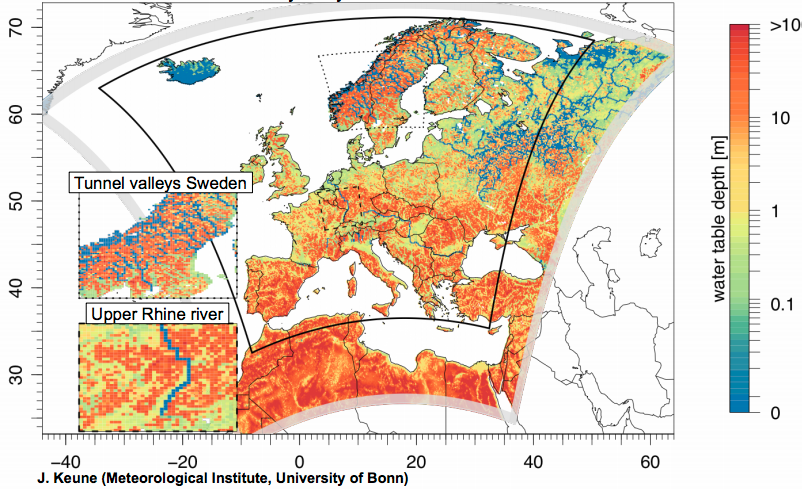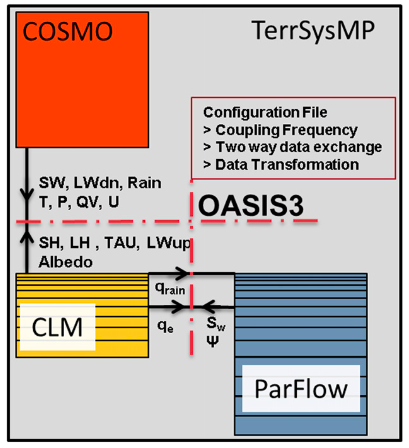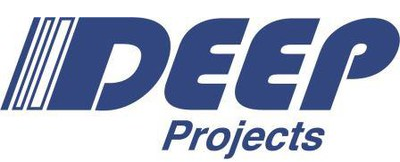
Earth System Modelling
The Terrestrial Systems Modelling Platform (TSMP) is a fully coupled, massive parallel regional Earth system model, used in many setups to simulate complex interactions and feedbacks between the different compartments of the geo-ecosystem.

TSMP is a free and open community code, extensively profiled and widely ported to multiple HPC systems. TSMP follows a MPMD execution model; through the OASIS3/MCT coupler different variants of the atmospheric model COSMO, alternatively also ICON, the Community Land Model (CLM) and the hydrological model ParFlow are connected to each other through MPI. The component models – developed by different user groups – are written using different programming languages, use different parallelisation and acceleration schemes, show different scaling behaviour (in case of ParFlow up to the full JUQUEEN BG/Q system), and have different hardware requirements. TSMP is ideally suited to exploit the MSA as it already uses a modular coupling design.

The three components with their specific hardware requirements need to be mapped to the most suited modules. A GPU- enabled variant of COSMO (which is not yet implemented in TSMP) uses a pragma-based (OpenACC) offload model and is mostly written in Fortran. ParFlow on the other hand is written in C and is currently ported to GPU using CUDA. CLM is part of the Community Earth System Model and written in Fortran. During the DEEP-SEA project a particular emphasis will be put on mapping the different programs and kernel implementations to the hardware and the improvement of the GPU kernels. TSMP will benefit from an improved memory-use with better efficiency and overall improved scalability, which allows km-scale, continental, climate-mode simulations with runtimes of one Simulation Year Per Day (SYPD). Similarly, the extensive workflow of pre- and post-processing including standard diagnostics and transformation into common exchange formats (FAIR principles) will benefit, e.g., from the work package “Measuring, Modelling, Mapping and Monitoring”.

